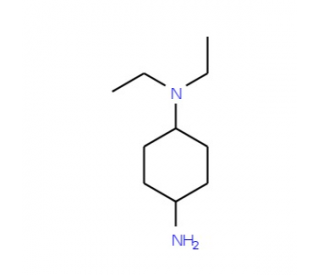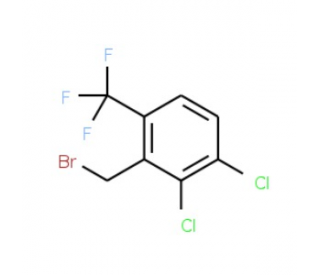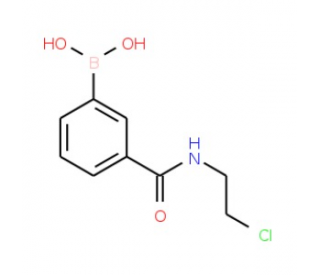详细说明
Species Reactivity
Human
Specificity
Detects human PSMB10/MECL1 in direct ELISAs and Western blots. In direct ELISAs, less than 6% cross-reactivity with recombinant human PSMB7 is observed.
Source
Polyclonal Goat IgG
Purification
Antigen Affinity-purified
Immunogen
E. coli-derived recombinant human PSMB10/MECL1
Thr40-Glu273
Accession # P40306Formulation
Lyophilized from a 0.2 μm filtered solution in PBS with Trehalose. *Small pack size (SP) is supplied as a 0.2 µm filtered solution in PBS.
Label
Unconjugated
Applications
Recommended
ConcentrationSample
Western Blot
1 µg/mL
See below
Please Note: Optimal dilutions should be determined by each laboratory for each application. are available in the Technical Information section on our website.
Data Examples
Western Blot | Detection of Human PSMB10/MECL1 by Western Blot. Western blot shows lysates of Daudi human Burkitt's lymphoma cell line, Raji human Burkitt's lymphoma cell line, HuT 78 human cutaneous T cell lymphoma cell line, and THP‑1 human acute monocytic leukemia cell line. PVDF membrane was probed with 1 µg/mL of Goat Anti-Human PSMB10/MECL1 Antigen Affinity-purified Polyclonal Antibody (Catalog # AF7684) followed by HRP-conjugated Anti-Goat IgG Secondary Antibody (Catalog # ). A specific band was detected for PSMB10/MECL1 at approximately 25 kDa (as indicated). This experiment was conducted under reducing conditions and using . |
Preparation and Storage
Reconstitution
Sterile PBS to a final concentration of 0.2 mg/mL.
Shipping
The product is shipped at ambient temperature. Upon receipt, store it immediately at the temperature recommended below. *Small pack size (SP) is shipped with polar packs. Upon receipt, store it immediately at -20 to -70 °C
Stability & Storage
Use a manual defrost freezer and avoid repeated freeze-thaw cycles.
12 months from date of receipt, -20 to -70 °C as supplied.
1 month, 2 to 8 °C under sterile conditions after reconstitution.
6 months, -20 to -70 °C under sterile conditions after reconstitution.
Background: PSMB10/MECL1
PSMB10 (Proteasome Subunit beta type-10; Also MECL1 and LMP10) is a 25-26 kDa member of the peptidase T1B family of molecules. It is expressed a wide variety of cells, particularly those responsive to proinflammatory cytokines. PSMB10 is expressed both constitutively and via IFN-gamma induction in a cell-specific manner. It contributes to the 700 kDa, 20S proteasome catalytic complex, a dynamic intracellular structure that participates in the ATP-dependent ubiquitin-proteasome-system used for protein degradation. PSMB10 qualifies as a beta -type, i (immuno)-type proteasome, meaning it both plays a catalytic role in the turnover of proteins, and is found in cytokine-responsive cells. The i-type of proteasome is believed to protect cells against the accumulation of oxidant-damaged proteins. This activity is absolutely dependent upon the removal of the precursor's prosequence, an action that exposes a critical internal Thr residue. Human PSMB10 is synthesized as a 29 kDa, 273 amino acid (aa) proprecursor. It contains a 39 aa autocleavable propeptide plus a 234 aa mature region. The mature region shows no identifiable standard structural motifs. Over aa 40-273, human PSMB10 shares 89% aa sequence identity with mouse PSMB10.
Long Name:
Proteasome (Prosome, Macropain) Subunit, beta Type, 10
Entrez Gene IDs:
5699 (Human); 19171 (Mouse); 291983 (Rat)
Alternate Names:
beta2i; FLJ00366; LMP10; LMP10Proteasome subunit beta-2i; Low molecular mass protein 10; Macropain subunit MECl-1; MECL1; MECl-1; MECL1EC 3.4.25.1; MGC1665; Multicatalytic endopeptidase complex subunit MECl-1; proteasome (prosome, macropain) subunit, beta type, 10; proteasome catalytic subunit 2i; Proteasome MECl-1; proteasome subunit beta 7i; proteasome subunit beta type-10; Proteasome subunit beta-2i; proteasome subunit MECL1; PSMB10










 粤公网安备44196802000105号
粤公网安备44196802000105号